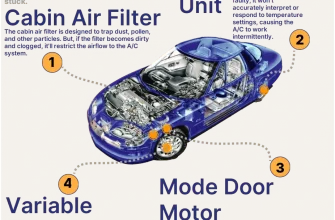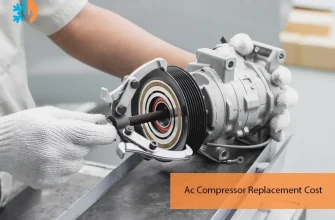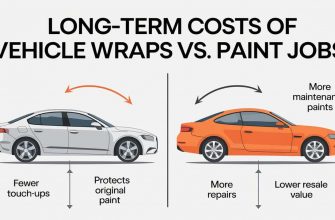In the realm of automotive diagnostics‚ understanding the intricacies of the engine management system is crucial for both enthusiasts and mechanics alike. One pivotal aspect of this system is the Short Term Fuel Trim (STFT)‚ a parameter that provides valuable insights into the engine’s fuel management. This article delves into the normal range of short-term fuel trim values‚ what they signify‚ and how they can affect your vehicle’s performance.
What is Short Term Fuel Trim?
Short Term Fuel Trim refers to the adjustments made by the engine control unit (ECU) to the fuel injector pulse width in real-time. This adjustment is critical for maintaining the ideal air-fuel ratio (AFR) under varying driving conditions. The STFT values are calculated based on the feedback received from the oxygen sensors‚ which monitor the exhaust gases for any deviations from the desired mixture.
Why is Short Term Fuel Trim Important?
The importance of STFT cannot be overstated. It plays a vital role in:
- Optimizing Performance: Proper fuel trim ensures that the engine runs at peak efficiency‚ maximizing power output while minimizing fuel consumption.
- Reducing Emissions: An optimal air-fuel mixture helps in lowering harmful emissions‚ making vehicles more environmentally friendly.
- Preventing Engine Damage: Deviations in fuel trim can lead to engine knocking or misfires‚ which over time can cause significant damage.
Normal Range of Short Term Fuel Trim
The normal range for short-term fuel trim typically falls between -10% to +10%. Here’s a breakdown of what these values mean:
- 0%: The fuel trim is ideal‚ indicating that the engine is receiving the correct amount of fuel relative to the amount of air.
- -10%: The engine is running rich‚ meaning there’s excess fuel present. This can occur due to issues like a faulty sensor or a leaking fuel injector.
- +10%: The engine is running lean‚ indicating a lack of fuel. Potential causes include vacuum leaks or a clogged fuel filter.
Interpreting Short Term Fuel Trim Readings
While the normal range provides a baseline‚ it’s essential to consider the context of the readings:
- Consistent Readings: If the STFT values remain stable‚ it suggests that the engine is operating efficiently. Fluctuations within the normal range are generally acceptable.
- Persistent Deviations: If the STFT readings consistently show values outside the normal range‚ it warrants further investigation. Such deviations can indicate underlying issues such as faulty sensors‚ fuel delivery problems‚ or exhaust leaks.
Understanding the normal range of short-term fuel trim is essential for diagnosing engine performance issues effectively. By monitoring STFT values‚ drivers and mechanics can take proactive steps to ensure optimal fuel efficiency and engine longevity. Regular maintenance and timely diagnostics can help keep your vehicle running smoothly‚ making the most out of every drop of fuel.
Whether you’re a seasoned car enthusiast or a casual driver‚ keeping an eye on your vehicle’s fuel trim can lead to better performance and a healthier engine.









The emphasis on reducing emissions through proper fuel trim was eye-opening. Great job highlighting environmental impacts!
This piece sheds light on an often-overlooked aspect of vehicle maintenance. Thank you for such an informative read!
I appreciate how the author broke down complex concepts into easy-to-understand terms. Very well written!
I found the section on the normal range of STFT values particularly helpful. It’s great to have such detailed information available!
Fantastic article! The discussion on potential causes for rich and lean conditions was particularly useful for troubleshooting.
This article is a must-read for anyone interested in automotive diagnostics. The insights on engine performance are invaluable!
As a car enthusiast, I loved how this article explained the intricacies of engine management systems. Very informative!
This article provided a clear and concise explanation of Short Term Fuel Trim. I appreciate the detailed breakdown of its importance!